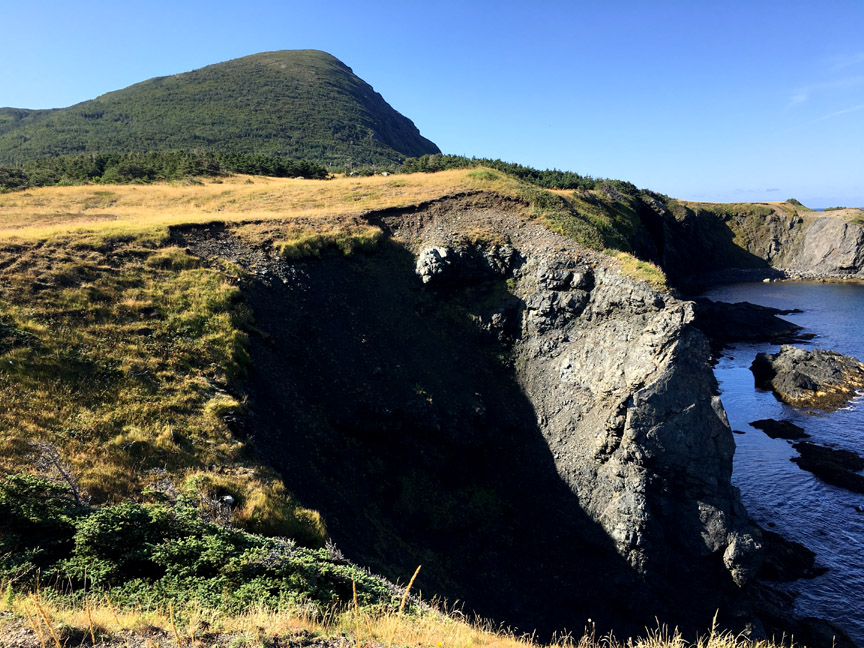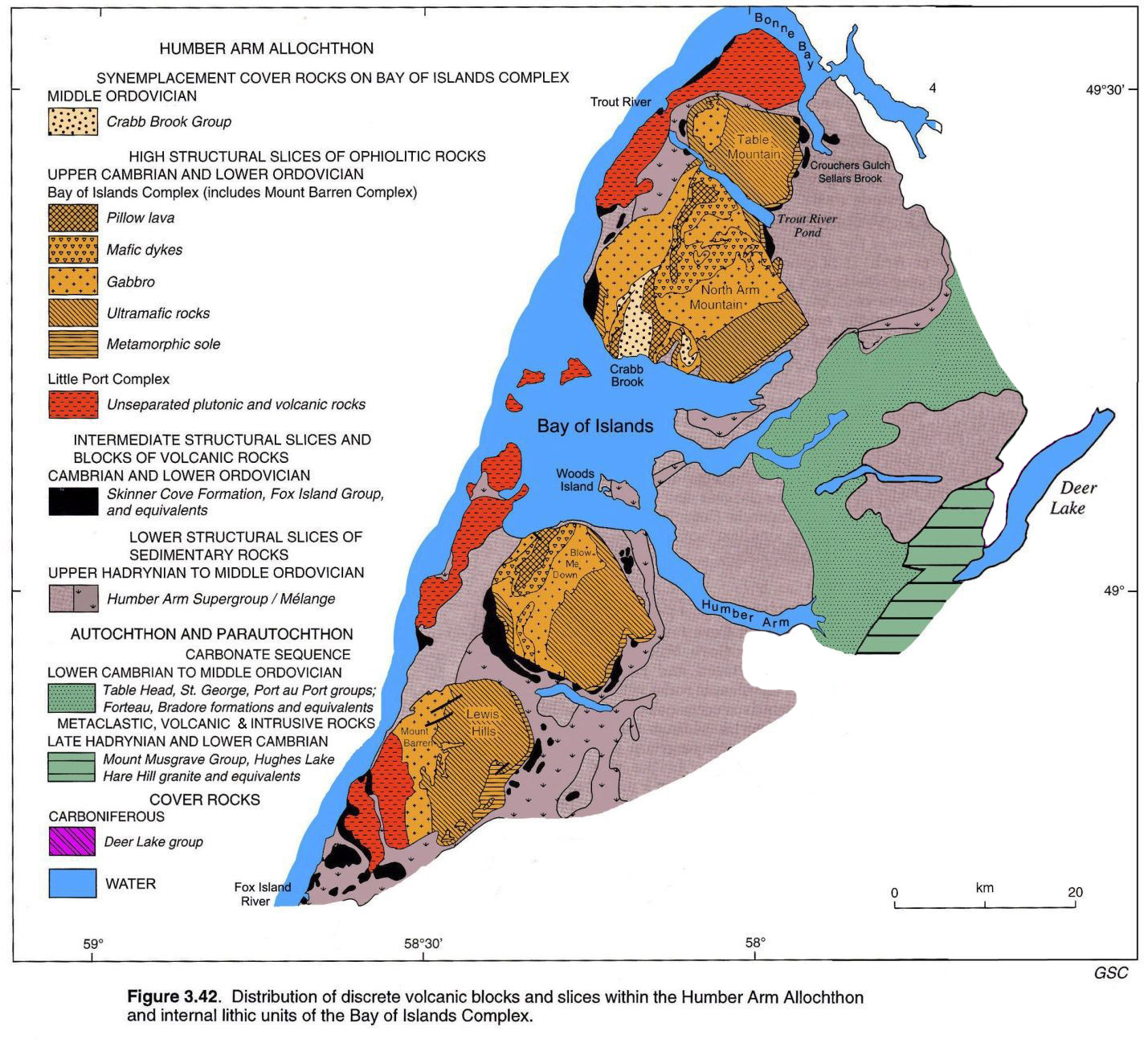Geosites in Cabox Geopark are to be divided into three broad categories – Geological, Ecological and Cultural – that provide a complete cross-section of the region’s natural and cultural heritage.
Geological GeoSites are divided into four distinct Groups. From east to west they are:
- Ancient Continental Slope of North America (shaded green on map below)
- Transported Continental Margin of North America (shaded pink on map below)
- Bay of Islands Ophiolite Complex (shaded orange on map below)
- Little Port Island Arc Complex (shaded red on map below)
GeoSite Group A is the Ancient Continental Shelf of North America. This is present in the east central part of the Geopark (e.g., Humber River Gorge and Goose Arm of the Bay of Islands) and parts of Gros Morne National Park.
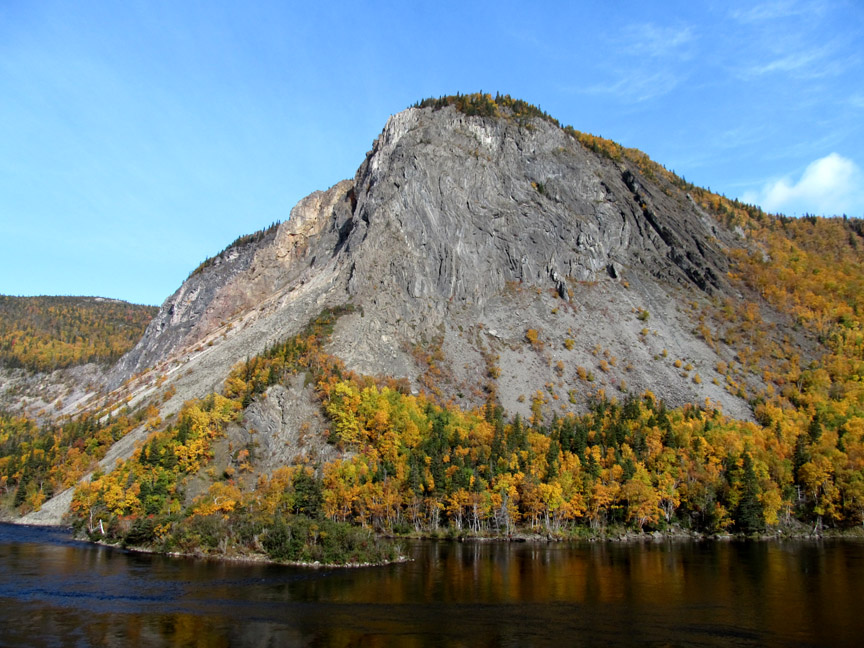
Transported Continental Margin
GeoSite Group B is the Transported Continental Margin of North America. This is the most widespread Geosite Group within the Geopark, covering large areas that surround ophiolite massifs of the Bay of Islands Igneous Complex, as well as areas immediately west and north of Corner Brook.
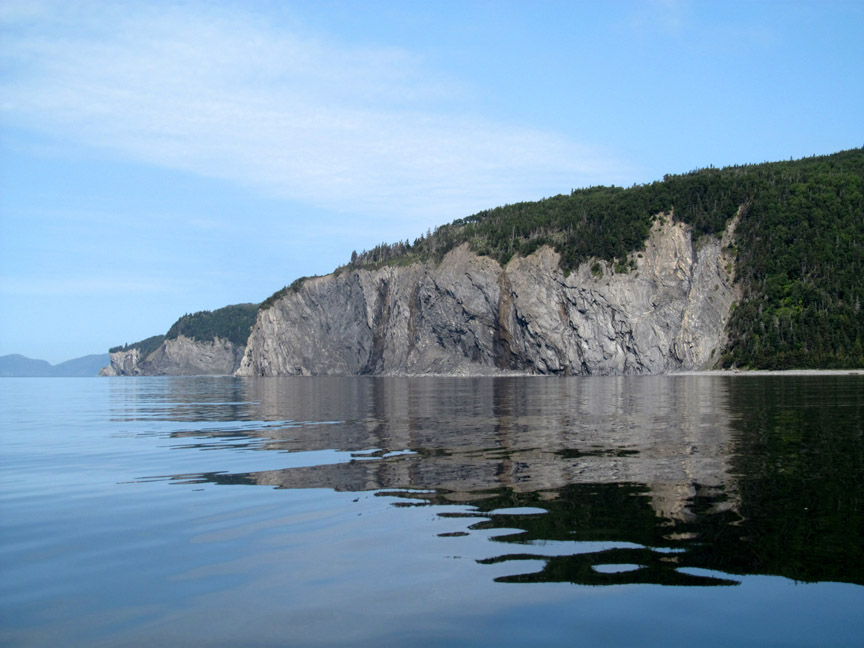
Bay of Islands Ophiolite Complex
GeoSite Group C includes the Bay of Islands Complex Ophiolite Massifs. These are the most obvious and spectacular natural features in the Geopark, forming high upland plateaus and dissected mountainous terrain. There are four such massifs located north and south of the Bay of Islands.
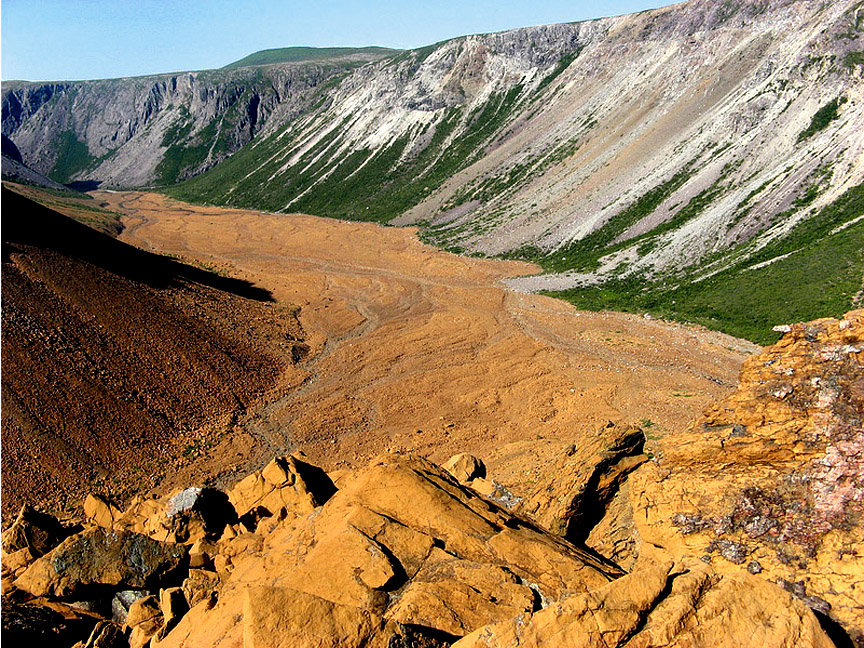
Little Port Island Arc Complex
GeoSite Group D includes the Little Port Island Arc Complex of unseparated plutonic and volcanic rocks that form narrow northeast-trending coastal slices between Fox Island River and Bonne Bay. The Complex overlies the Humber Arm Supergroup in most places, but between Trout River and Bonne Bay it overlies the Skinner Cove and Old Man Cove formations.
